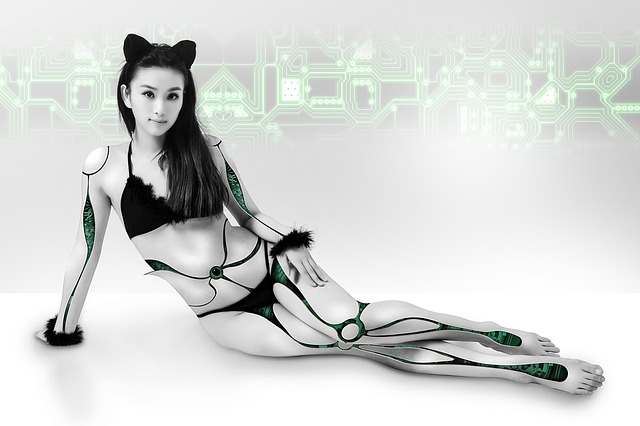January 11, 2018
Uncanny Valley and Gothic Literature
Note: the following article on the concept of the Uncanny Valley is a modified excerpt (pp. 161-162) from my doctoral dissertation, “Time is Everything with Him”: The Concept of the Eternal Now in Nineteenth-Century Gothic, which can be downloaded (for free) from the repository of the Tampere University Press. For a list of my other academic publications, see here.
The Uncanny Valley: from Robots to Monsters
The term “Uncanny Valley”, coined by the robotics researcher Masahiro Mori, refers to the hypothesis that there is a sharp drop (a “valley”, when imagined as a graph) in feelings of empathy and familiarity inspired by non-human entities as these become more human-like in appearance, manners, and movement (Liu 2010, 225).
So, a figure that is almost but not totally human-like, will inspire a more uncomfortable feeling than a figure that is more clearly artificial. The concept of the Uncanny Valley is highly relevant in the field of robotics and digital technology.
However, as its name implies, it also shares commonalities with Freud’s research and is pertinent in Gothic studies as well.

It is important to underline the fact that the Uncanny Valley is not a fear based on a threatening Other. Rather, the feeling of uneasiness originates from the realization that the Other approaches the threshold of inseparability with one’s self.
Taking advantage of this ambiguity, one could construe this feeling of uneasiness in terms of Todorovian uncertainty (see the section on the ontological differences between the Gothic and science fiction).
In other words, to meet with an almost but not totally human-like entity implies a difficulty or outright inability to properly distinguish between the human and the monstrous.
Even aggressive non-human entities do not inspire this uncanny kind of eeriness if they are distinctly non-human. However, even visibly friendly human-like creatures can cause intensely negative reactions.
Explaining the Uncanny Valley
Among the large pool of possible explanations for the phenomenon, the ones that are more related to the Gothic revolve around existential fears, particularly those related with death, the ultimate unrepresentable.
As MacDorman and Ishiguro argue (2006, 313), beings that appear human but have artificial innards elicit the subconscious human fear of us all being mere machines without a soul.
In this context it would also be useful to recall Kayser’s term puppet play in relation to the grotesque: “the unity of perspective in the grotesque consists in an unimpassioned view of life on earth as an empty, meaningless puppet play or a caricatural marionette theatre” (Kayser 1981, 186).
Furthermore, the mechanical movement of such a creature underlines the subconscious fear of losing bodily control (MacDorman and Ishiguro 2006, 313).
In addition, MacDorman and Ishiguro refer to Rozin’s theory of disgust, to explain that creatures that are distinctively non-human will not appear threatening in terms of contagious diseases, as an observer would subconsciously understand their genetic makeup as excessively different.
Conversely, significantly human-like beings will not only appear as possible threats, but their differences can also be subconsciously construed as symptoms of infection and illness (Ibid 312).
The Uncanny Valley in the Gothic
Both the aforementioned factors are at play in Dracula. In Stoker’s novel, the discourse of contagion goes hand-in-hand with that of soulless creatures, “a new and ever-widening circle of semi-demons” (Stoker 2003, 60) threatening to multiply uncontrollably.
That, however, is only the surface of the matter. What is the true cause of the characters’ alarm is their inability to establish a grip on objective reality.
The conflict or outright contradiction between, on the one hand, the apogee of Victorian technology and reason, and, on the other hand, the superstition surrounding Dracula (and Van Helsing’s methods as well), further underlines the fact that the world of Dracula is a world that is neither objective nor subjective, but omnijective. Consequently, it is at the very bottom of the Uncanny Valley.
In Francis Ford Coppola’s adaptation, perhaps more evidently than in the novel, much of the consternation surrounding the events of the first act (both in Transylvania and in England, with Lucy falling mysteriously ill), is emphatically portrayed as an epistemological failure, with apparent sublime features.
The characters are not alarmed by what is happening to them. Not at least as much as by their inability to know what that is. And it is precisely their difficulty or inability to neatly categorize it as illusion or not that fuels their fear.
Read more: Angelis, Christos. “Time is Everything with Him”: The Concept of the Eternal Now in Nineteenth-Century Gothic. Doctoral Dissertation. Tampere, Finland: Tampere University Press, 2017. Available from the repository of the Tampere University Press.
Works Cited
Kayser, Wolfgang. The Grotesque in Art and Literature. Translated by Ulrich Weisstein. New York: Columbia University Press, 1981.
Liu, Lydia H. The Freudian Robot: Digital Media and the Future of the Unconscious. Chicago: University of Chicago Press, 2010.
MacDorman, Karl. F., and Hiroshi Ishiguro. “The Uncanny Advantage of Using Androids in Cognitive Science Research”. Interaction Studies. 7.3 (2006): 297–337.
Stoker, Bram. Dracula. London: Penguin, 2003.
Comments are closed for posts older than 90 days